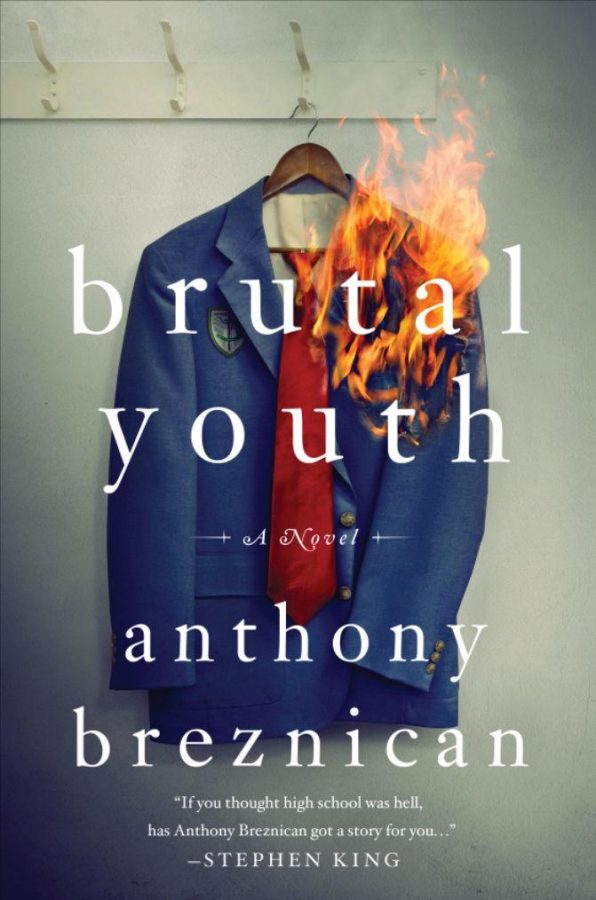Former Pitt News EIC gets ‘Brutal’ in strong debut novel
October 24, 2014
“Brutal Youth”
By Anthony Breznican
Grade: B+
There’s a scene near the end of Richard Linklater’s recent opus, “Boyhood,” in which a teacher tells Mason (Ellar Coltrane) that you find your “people” in college. Anthony Breznican’s “Brutal Youth” would beg to differ.
In his debut novel, the former Pitt News editor-in-chief makes a convincing case for finding your “people” in high school — or simply whenever someone has your back at the lowest of times.
“Brutal Youth” follows a trio of freshman rejects: Peter Davidek, a bullying target, who sports a tacky clip-on tie and is largely ignored at home, Noah Stein, his big-hearted friend with a haunting backstory and Lorelei Pascal, a beautiful girl who’s largely resented by the student body for her good looks.
Their school — and battleground — is St. Michael’s, a highly corrupt fictional high school located just north of Pittsburgh. Although Breznican grew up there and even sets the story during his time in high school (1991), he maintains that, aside from an embezzlement scandal involving the parish priest, “Brutal Youth” is all fiction. Considering how accurately life at St. Mike’s captures the book’s title, it’s a relief that this stuff didn’t happen to Breznican.
Right from the prologue, the sense of chaos bursting beyond the school’s control is established when Colin Vickler, dubbed “The Boy on the Roof,” sneaks his way atop St. Michael’s and violently hurls glass jars at the students and faculty below. It’s a PR nightmare, but the school conveniently covers it all up, and Colin mysteriously disappears without an explanation from faculty.
“Brutal Youth” carries on like this for most of its duration. Spurts of unrest are brushed under the rug by St. Michael’s — especially if they have a hand in perpetrating them.
The narrative centerpiece of “Brutal Youth” is the mounting tension for St. Mike’s annual “Hazing Picnic,” which follows an entire school year of merciless upperclassmen-to-freshmen bullying. From their first days at school, the bullies and teachers are out to get Peter, Noah and Lorelei in full measure. Cruel and unjust detentions get slapped on our heroes as frequently as physical blows from the bullies.
Among the novel’s best characters are its grown-up antagonists — Ms. Bromine, a bitter and callous guidance counselor, who doles out more punishment than guidance, and Father Mercedes, the unscrupulous parish priest who wants to see St. Mike’s close its doors more than anything.
But none are realized as successfully as Hannah Kraut, the mysterious specter hanging over St. Michael’s — whose keen ear for reputation-shattering secrets even scares the bullies. Hannah’s a deeply nuanced character, and she promises to make a big splash at the Hazing Picnic — it just takes Breznican a little too long to get there.
Breznican had been throwing around ideas for “Brutal Youth” since the late ‘90s, and, at a robust 416 pages, it shows. Every scene of bullying, infighting and high school crushing is amusing to read, but some scenes grow redundant and stall the narrative. From early on in the story, it’s established that St. Mike’s administration isn’t the most effective at enforcing its rules, so some of the later scenes in which Peter and Noah become unjust scapegoats aren’t as essential.
But the padding comes with the best of intentions — “Brutal Youth” has its heart in the right place. The three central freshmen lead fairly damaged lives, but the poignancy never turns into exhausting melancholy. At first glance, Breznican’s novel might be perceived as an anti-bullying parable, but that would completely overlook the more important themes of fighting back with honor, not internalizing every crisis and taking a bullet for your best friend — or, at least, wearing a clip-on-tie for him.



